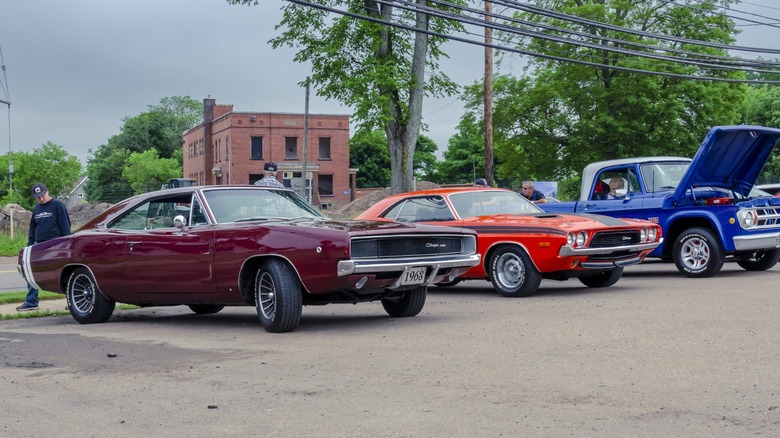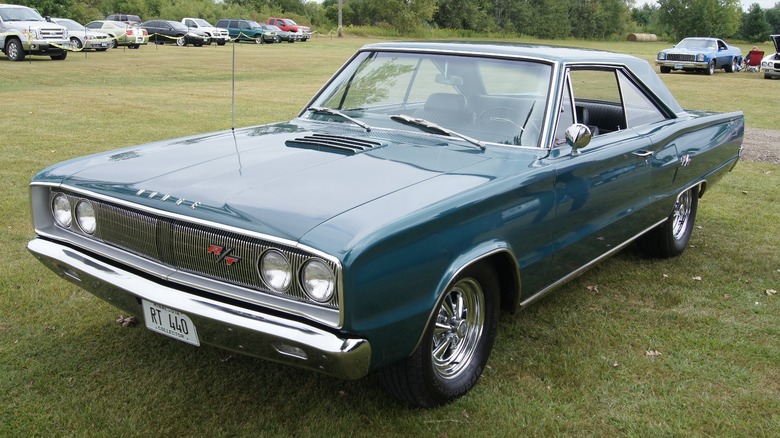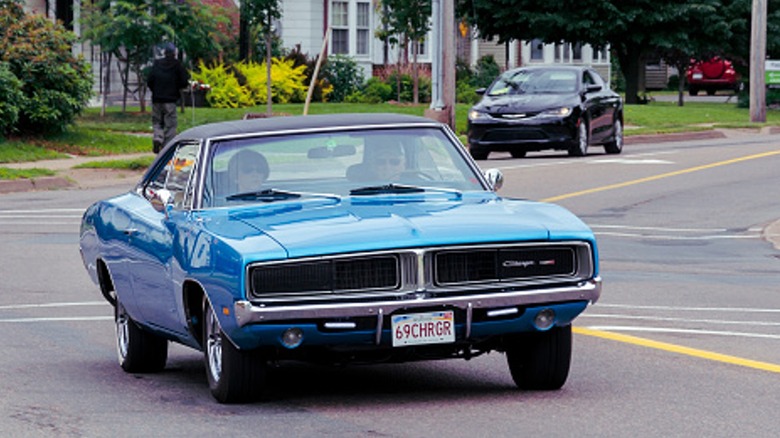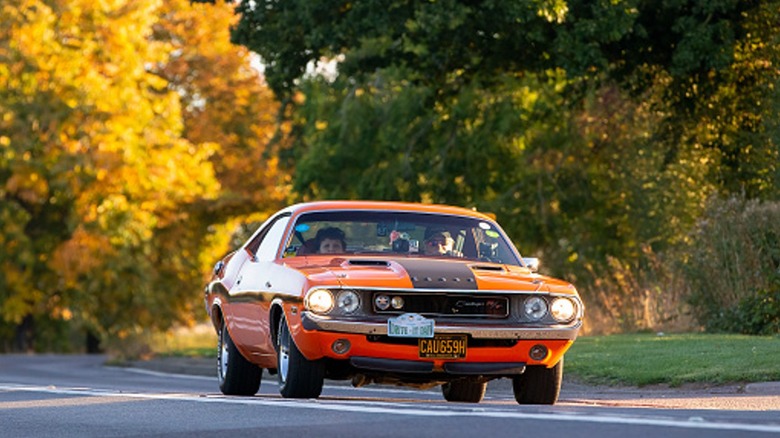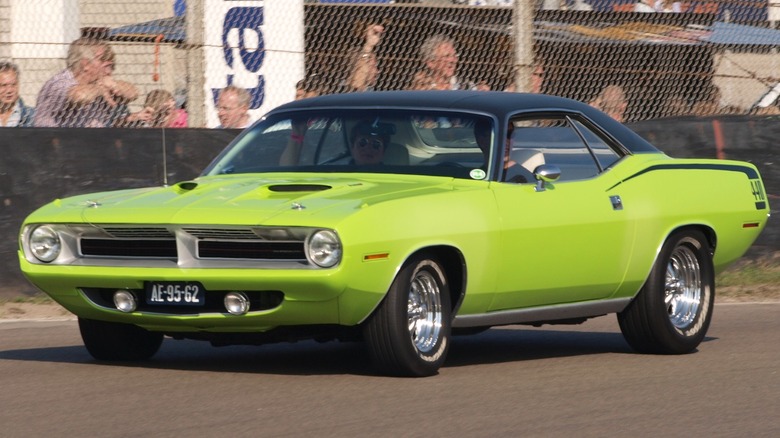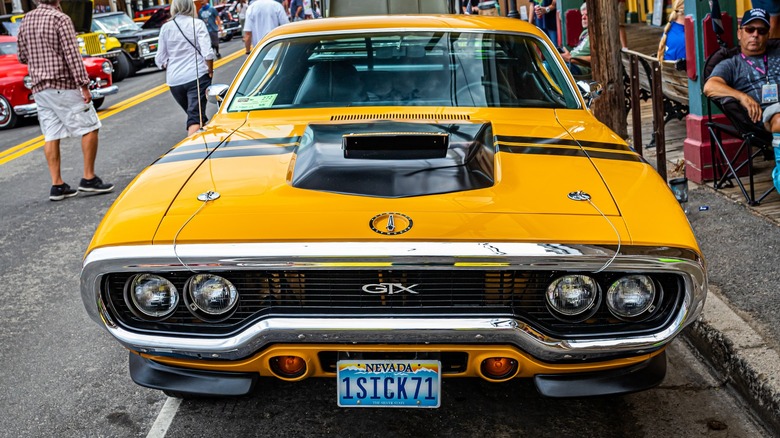5 Vehicles Built With The Legendary 426 Hemi Engine
The Chrysler Hemi engine was one of the most powerful engines you could find in a Chrysler car in the late '60s and early '70s. Its distinctive dome-shaped cylinders and large 426-cubic-inch (nearly 7 liters) displacement set it apart, making it one of Chrysler's legendary engines, usually found in the top variants of its most powerful muscle and pony cars.
The 426 Hemi is arguably the most popular variant of the Hemi, debuting on the 1966 Plymouth Belvedere. But its popularity led to its availability in several Dodge and Plymouth models, a testament to its unmatched power and performance. In fact, the British sports carmaker Jensen Motors Limited even experimented with the 426 Hemi V8 with the Jensen FFF-100. Unfortunately, this British beast did not make it out of the concept car stage.
So, on which other cars can you get the legendary 426 Hemi? Check out these cars that offered this powerful engine as an option, many of which are now legendary in their own right, like the 1969 Dodge Charger R/T.
1968 Dodge Coronet R/T
The Dodge Coronet R/T is one of the first models to get the 426 Hemi as an option, alongside the Plymouth Belvedere. It's also one trim level down from the Dodge Coronet Super Bee, one of the rarest Mopars ever built, which can also be had with the Hemi.
Although both the R/T and Super Bee trims came standard with the 440 Magnum V8 engine, you can get the more powerful 426 Hemi engine as a nearly $1,000 option. The Hemi-powered Coronet R/T is available as a two-door coupe. The engine is mated to a four-speed manual that delivers 425 hp to the rear wheels. You can also get a three-speed automatic as an option if you don't like rowing your own gears.
The 1968 Dodge Coronet R/T has a top speed of 131 mph and can hit 0 to 60 in 4.8 seconds. It also had a quarter mile of 13.4 seconds, making it one of the fastest cars of its time.
1969 Dodge Charger R/T
Just like its legendary engine, the 1969 Dodge Charger R/T has gained legendary status, making it an expensive collector car. Its status was further cemented when it starred alongside Dominic Toretto in the Fast & Furious franchise.
The mid-size Charger sits one level below the intermediate Coronet, making it a more affordable option. However, it can still be had with 426 Hemi, which outputs the same 425 horsepower as that on the bigger Coronet R/T. This meant that the Charger R/T had a higher top speed of 137 mph. However, its 0 to 60 time is slightly longer at 4.9 seconds, and it also had a slower quarter mile at 13.5 seconds. Despite that, it was still a fun muscle car to drive.
Nevertheless, the Charger's lower price meant over 89,000 units were sold, although only around 20% of this number were R/T, and much fewer – about 430 – only came with the 426 Hemi from the factory.
1970 Dodge Challenger R/T
The Dodge Challenger was conceived as a lighter, more nimble version of the Charger. It featured the same two-door coupe or convertible body and similar engine options but had reduced weight. In fact, the first-generation Challenger spawned the legend of the Black Ghost – a street racer that defeated many other cars during illegal drag races but remained anonymous until it was last seen in 1975.
The 426 Hemi-powered 1970 Dodge Challenger R/T still had 425 hp on tap, but its lighter weight meant it had a faster 0 to 60 time at 4.7 seconds. It also had a 13.3-second quarter mile and a 134-mph top speed. These numbers may not sound much today, and the 0.2-second difference in the 0 to 60 and quarter mile may look small, but it can mean the difference between winning or going home on foot if you're racing for pink slips.
Although the Charger and the Challenger were not Dodge's most expensive models, they were able to build legends around their nameplates with the help of the 426 Hemi engine. Dodge eventually had to stop producing these cars in the 1980s. But when it wanted to revive its muscle cars in the 2000s, it chose these models for their legendary status.
1971 Plymouth Hemi 'Cuda
When you think of a fast muscle car from the 1970s, the Plymouth 'Cuda is bound to come up in the discussion. The 'Cuda' moniker came from the top-trim variant of the previous generation, Barracuda.
Just like the Dodge Models, the Plymouth Hemi 'Cuda had the 426 Hemi as its more powerful engine option, paired with a four-speed manual or a three-speed auto that delivers 425 hp to the rear wheels. The 'Cuda only had a 5.3-second 0 to 60 and a 13.8-second quarter mile, with a 134 mph top speed, often making it an underappreciated muscle car from Plymouth.
Nevertheless, these numbers and incredible looks make it a great collector's car. It also makes the Plymouth 'Cuda one of the coolest classic muscle cars with big block engines. Unfortunately, the Plymouth Hemi 'Cuda was soon discontinued after the 1973 energy crisis, especially as consumer tastes shifted from large, powerful cars to thrifty and economical vehicles.
[Featured image by AlfvanBeem via Wikimedia Commons | Cropped and scaled | CC0 1.0]
1971 Plymouth GTX
The Plymouth GTX started as a mid-sized muscle car based on the Belvedere, one of the first cars to get the 426 Hemi. However, the 1971 Plymouth GTX is one of the most unique models in this list, especially given its "fuselage" styling and shortened wheelbase. It's also one of the most powerful cars Plymouth ever made.
Just like the other Hemi cars we listed, this car could attain similar, although slower, numbers: 5.8 seconds on the 0 to 60 and 14.2 seconds for the quarter mile. It also had a similar 134-mph top speed as the 'Cuda. But, just like the former, the GTX was discontinued soon after because of the energy crisis.
Chrysler designed the 426 Hemi for the muscle car era, and you will find it as the heart of many of Dodge's and Plymouth's iconic muscle cars. Today, the Hemi lives on as one of the most powerful engines in Dodge, Jeep, and Ram Trucks. But if you want an iconic car with an iconic engine, the models we've listed above are your picks.
